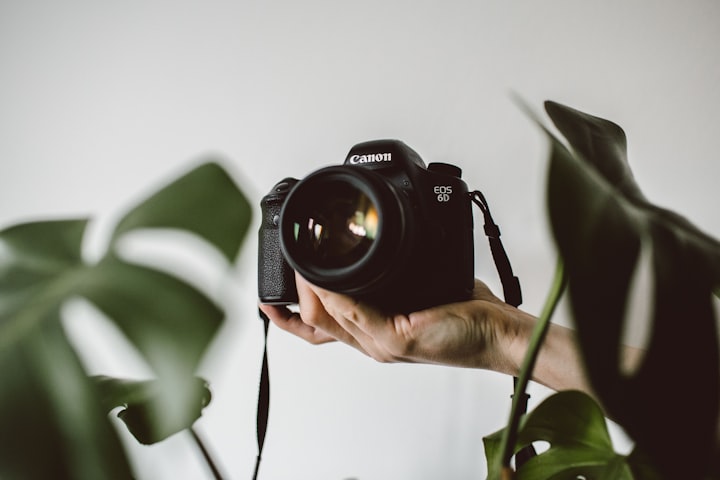Capturing the World Through the Lens
From Early Days to Modern Times, How Photography has Transformed the Way We See the World
Photography is an art form that has been around for almost 200 years. From its early beginnings with the camera obscura to the modern digital age, photography has evolved and transformed the way we see the world. In this essay, we will explore the history of photography, the techniques and technology used in the craft, and the ways in which photography has impacted our lives.
Photography was first invented in the early 19th century, with the invention of the camera obscura. This device used a lens to project an image onto a surface, which could then be traced or painted. However, it was not until the invention of the daguerreotype by Louis Daguerre in 1839 that photography as we know it today was born. The daguerreotype was a type of photograph made on a silver-coated copper plate, and it was the first practical method of creating a permanent image.
In the early days of photography, the process was slow and cumbersome. Cameras were large and heavy, and the plates had to be coated with light-sensitive chemicals before use. The images produced were often blurry and lacked detail. However, with the invention of new technologies and the development of new techniques, photography began to improve.
One of the most significant advancements in photography was the invention of the dry plate process in the 1870s. This process allowed photographers to use pre-coated plates that did not require immediate processing. This made the process of taking photographs much faster and more convenient. Another important development was the introduction of roll film in the 1880s, which made it possible to take multiple photographs without having to change plates.
The 20th century brought even more advancements to photography. The introduction of the 35mm film format in the 1920s revolutionized the way photographs were taken. This format was smaller and more portable than previous formats, and it made it possible for photographers to take more candid shots. The invention of color film in the 1930s made it possible to capture the world in vibrant hues, and the development of the Polaroid instant camera in the 1940s made it possible for people to see their photographs right away.
The digital age of photography began in the 1980s with the invention of the digital camera. These cameras used sensors to capture images that could be stored on memory cards or other digital storage media. Digital photography made it possible for photographers to see their images immediately, and it allowed for easy editing and manipulation of images using computer software. Today, almost all photography is digital, and the technology continues to evolve at a rapid pace.
Photography is not just a science; it is also an art form. Photographers use various techniques and styles to create images that are visually stunning and emotionally evocative. One of the most important techniques in photography is composition, which involves arranging the elements of an image in a visually pleasing way. This can involve the use of the rule of thirds, leading lines, and other compositional techniques.
Another important technique in photography is lighting. Lighting can make or break a photograph, and photographers use various techniques to create the desired effect. This can involve the use of natural light, artificial light, and modifiers such as reflectors and diffusers. The use of shadows and highlights can also add depth and dimension to an image.As mentioned earlier, photography has had a significant impact on the way we see the world. It has allowed us to capture moments in time, preserve memories, and communicate ideas and emotions. Photography has also been used as a tool for documentation, journalism, and scientific research.
One of the most powerful uses of photography is in storytelling. Photographers can use their images to tell a story, evoke emotions, and share experiences. Photojournalism, for example, has been used to document historical events, social issues, and cultural phenomena. Photographers can capture images that provide a glimpse into the lives of others, allowing us to see the world from a different perspective.
Photography has also been used in scientific research. Microphotography, for example, has been used to study microscopic organisms and structures. High-speed photography has been used to capture fast-moving phenomena such as explosions and collisions. In astronomy, photography has been used to capture images of distant galaxies and stars.
Photography has also had a significant impact on the art world. Photographers can use their images to create works of art that are visually stunning and emotionally evocative. Photography has been used to explore a wide range of artistic styles, from documentary and street photography to fine art and conceptual photography. Some photographers have even used photography to push the boundaries of what is considered art.
In addition to its artistic and scientific applications, photography has also had a significant impact on popular culture. It has been used in advertising, fashion, and entertainment. Photography has helped to shape our cultural identity, influencing the way we see ourselves and the world around us.
The democratization of photography has also had a profound impact on society. With the rise of digital photography, almost anyone can take a photograph and share it with the world. Social media platforms like Instagram and Facebook have made it easy for people to share their images and connect with others. Photography has become a form of self-expression and a way to connect with others on a global scale.
About the Creator
Muhammad Bilal
I am a passionate writer and storyteller with a knack for capturing the essence of the human experience. I brings a unique perspective to writing, often exploring themes related to topics of interest.







Comments
There are no comments for this story
Be the first to respond and start the conversation.